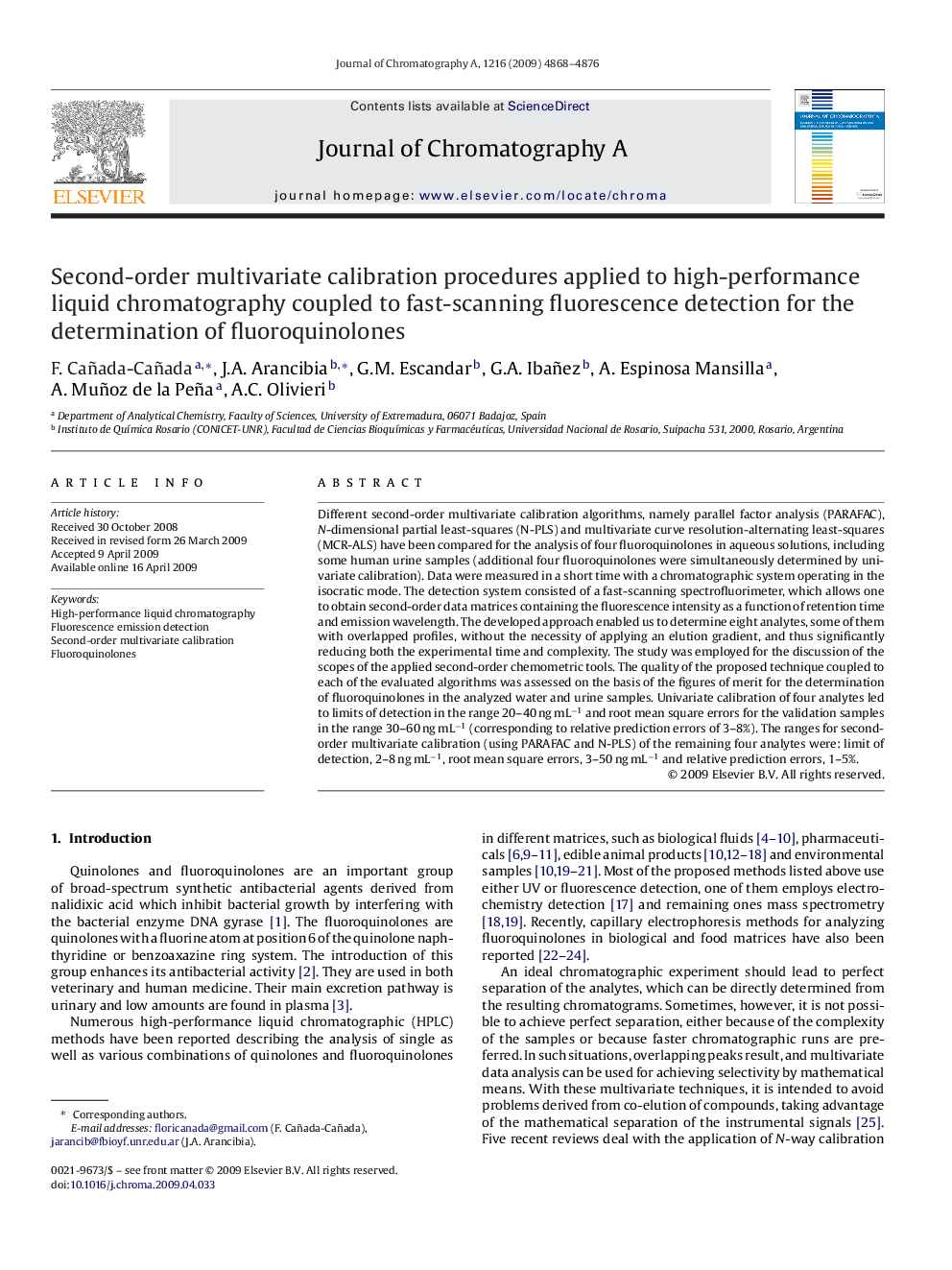| کد مقاله | کد نشریه | سال انتشار | مقاله انگلیسی | نسخه تمام متن |
|---|---|---|---|---|
| 1205383 | 965194 | 2009 | 9 صفحه PDF | دانلود رایگان |

Different second-order multivariate calibration algorithms, namely parallel factor analysis (PARAFAC), N-dimensional partial least-squares (N-PLS) and multivariate curve resolution-alternating least-squares (MCR-ALS) have been compared for the analysis of four fluoroquinolones in aqueous solutions, including some human urine samples (additional four fluoroquinolones were simultaneously determined by univariate calibration). Data were measured in a short time with a chromatographic system operating in the isocratic mode. The detection system consisted of a fast-scanning spectrofluorimeter, which allows one to obtain second-order data matrices containing the fluorescence intensity as a function of retention time and emission wavelength. The developed approach enabled us to determine eight analytes, some of them with overlapped profiles, without the necessity of applying an elution gradient, and thus significantly reducing both the experimental time and complexity. The study was employed for the discussion of the scopes of the applied second-order chemometric tools. The quality of the proposed technique coupled to each of the evaluated algorithms was assessed on the basis of the figures of merit for the determination of fluoroquinolones in the analyzed water and urine samples. Univariate calibration of four analytes led to limits of detection in the range 20–40 ng mL−1 and root mean square errors for the validation samples in the range 30–60 ng mL−1 (corresponding to relative prediction errors of 3–8%). The ranges for second-order multivariate calibration (using PARAFAC and N-PLS) of the remaining four analytes were: limit of detection, 2–8 ng mL−1, root mean square errors, 3–50 ng mL−1 and relative prediction errors, 1–5%.
Journal: Journal of Chromatography A - Volume 1216, Issue 24, 12 June 2009, Pages 4868–4876